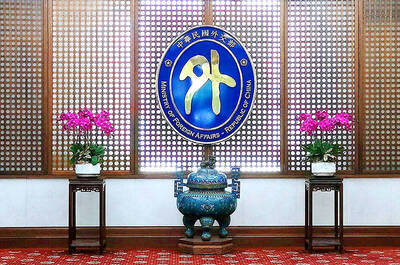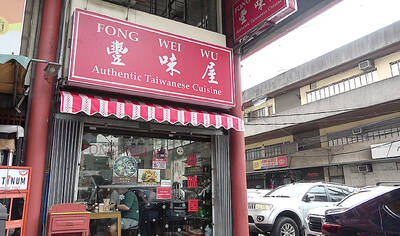The lifting of a 10-year-long ban on certain categories of Vietnamese workers in Taiwan took effect yesterday, with the first batch of about 10,000 workers expected in about three months, the Ministry of Labor said.
The prohibition was imposed on Vietnamese fishermen in 2004 and on caregivers and domestic workers in 2005 mainly because of the high incidence of Vietnamese abandoning their jobs, the ministry said.
Vietnamese have still been allowed to pursue employment in Taiwan in other industries, such as manufacturing.
Hanoi imposed heavy fines on absconded workers after the bans were imposed and the percentage of missing employees had fallen from a high of 10.2 percent in 2004 to 5.8 percent last year, ministry data showed.
However, the figure remained higher last year than for workers from Indonesia (3.9 percent), the Philippines (0.56 percent) and Thailand (0.48 percent).
The government in April said that it would lift the ban this month after Indonesia earlier this year said it planned to stop sending domestic workers overseas by 2017, sparking concerns of a potential shortage of such workers.
The Vietnamese government has focused on improving training for those seeking employment in Taiwan and vowed to continue fining its nationals who abandon their jobs.
The ministry also introduced several measures to prevent foreign workers from absconding.
The measures include establishing a direct-hiring system, reducing brokerage fees and requiring that repatriation fees be paid by Vietnamese migrant workers if they are repatriated, the ministry said.
Since 2002, the absconding rate among Vietnamese workers has been the highest among all foreign workers.
To cope with the issue, more stringent controls will be required by Vietnam, ministry official Liu Chug-chun (劉佳鈞) said, adding that Hanoi has promised to impose fines of NT$150,000 and other measures on workers if they are found to have absconded from their jobs.
The Vietnamese government also must pay a repatriation deposit within a month after a Vietnamese migrant worker is reported missing.
In the past, fees for the detention and repatriation of Vietnamese workers were shouldered by Taiwan’s government.
Vietnam reduced the total expenses linked to exporting labor to Taiwan, including brokerage fees, from US$5,000 per worker in 2004 to US$4,000 per worker last year, Liu said.
A direct-hiring system is also to be also set up, which could scrap the US$4,000 fees levied on Vietnamese migrant workers and the NT$20,000 brokerage fees on employers.
Cutting such fees could indirectly boost the incomes of Vietnamese working in Taiwan and reduce their motivation for running away, Liu said.
The ministry did not rule out the possibility of resuming the freeze on Vietnamese workers if the absconding rate is not reduced after the implementation of the more stringent measures, Liu said.

The Ministry of Foreign Affairs (MOFA) yesterday voiced dissatisfaction with the Comprehensive and Progressive Agreement for Trans- Pacific Partnership (CPTPP), whose latest meeting, concluded earlier the same day, appeared not to address the country’s application. In a statement, MOFA said the CPTPP commission had "once again failed to fairly process Taiwan’s application," attributing the inaction to the bloc’s "succumbing to political pressure," without elaborating. Taiwan submitted its CPTPP application under the name "Separate Customs Territory of Taiwan, Penghu, Kinmen and Matsu" on Sept. 22, 2021 -- less than a week after China

ALIGNED THINKING: Taiwan and Japan have a mutual interest in trade, culture and engineering, and can work together for stability, Cho Jung-tai said Taiwan and Japan are two like-minded countries willing to work together to form a “safety barrier” in the Indo-Pacific region, Premier Cho Jung-tai (卓榮泰) yesterday said at the opening ceremony of the 35th Taiwan-Japan Modern Engineering and Technology Symposium in Taipei. Taiwan and Japan are close geographically and closer emotionally, he added. Citing the overflowing of a barrier lake in the Mataian River (馬太鞍溪) in September, Cho said the submersible water level sensors given by Japan during the disaster helped Taiwan monitor the lake’s water levels more accurately. Japan also provided a lot of vaccines early in the outbreak of the COVID-19 pandemic,

Kaohsiung Mayor Chen Chi-mai (陳其邁) on Monday announced light shows and themed traffic lights to welcome fans of South Korean pop group Twice to the port city. The group is to play Kaohsiung on Saturday as part of its “This Is For” world tour. It would be the group’s first performance in Taiwan since its debut 10 years ago. The all-female group consists of five South Koreans, three Japanese and Tainan’s Chou Tzu-yu (周子瑜), the first Taiwan-born and raised member of a South Korean girl group. To promote the group’s arrival, the city has been holding a series of events, including a pop-up

A home-style restaurant opened by a Taiwanese woman in Quezon City in Metro Manila has been featured in the first-ever Michelin Guide honoring exceptional restaurants in the Philippines. The restaurant, Fong Wei Wu (豐味屋), was one of 74 eateries to receive a “Michelin Selected” honor in the guide, while one restaurant received two Michelin stars, eight received one star and 25 were awarded a “Bib Gourmand.” The guide, which was limited to restaurants in Metro Manila and Cebu, was published on Oct. 30. In an interview, Feng Wei Wu’s owner and chef, Linda, said that as a restaurateur in her 60s, receiving an